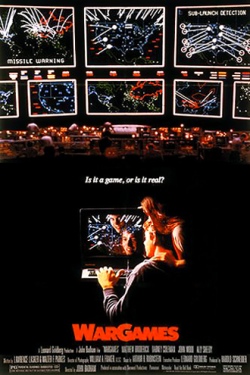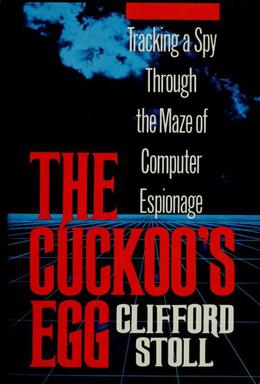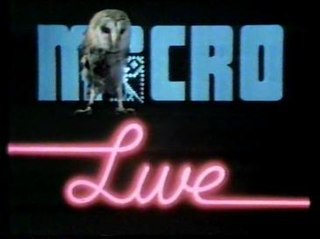Related Research Articles

A hacker is a person skilled in information technology who uses their technical knowledge to achieve a goal or overcome an obstacle, within a computerized system by non-standard means. Though the term hacker has become associated in popular culture with a security hacker – someone who utilizes their technical know-how of bugs or exploits to break into computer systems and access data which would otherwise be inaccessible to them – hacking can also be utilized by legitimate figures in legal situations. For example, law enforcement agencies sometimes use hacking techniques in order to collect evidence on criminals and other malicious actors. This could include using anonymity tools to mask their identities online, posing as criminals themselves. Likewise, covert world agencies can employ hacking techniques in the legal conduct of their work. On the other hand, hacking and cyber-attacks are used extra- and illegally by law enforcement and security agencies, and employed by state actors as a weapon of both legal and illegal warfare.

In computing, a Trojan horse is any malware that misleads users of its true intent by disguising itself as a standard program. The term is derived from the ancient Greek story of the deceptive Trojan Horse that led to the fall of the city of Troy.

WarGames is a 1983 American science fiction techno-thriller film written by Lawrence Lasker and Walter F. Parkes and directed by John Badham. The film, which stars Matthew Broderick, Dabney Coleman, John Wood, and Ally Sheedy, follows David Lightman (Broderick), a young hacker who unwittingly accesses a United States military supercomputer programmed to simulate, predict and execute nuclear war against the Soviet Union.

In the computer industry, vaporware is a product, typically computer hardware or software, that is announced to the general public but is late or never actually manufactured nor officially cancelled. Use of the word has broadened to include products such as automobiles.

MacPaint is a raster graphics editor developed by Apple Computer and released with the original Macintosh personal computer on January 24, 1984. It was sold separately for US$195 with its word processing counterpart, MacWrite. MacPaint was notable because it could generate graphics that could be used by other applications. It taught consumers what a graphics-based system could do by using the mouse, the clipboard, and QuickDraw picture language. Pictures could be cut from MacPaint and pasted into MacWrite documents.
Wardialing is a technique to automatically scan a list of telephone numbers, usually dialing every number in a local area code to search for modems, computers, bulletin board systems and fax machines. Hackers use the resulting lists for various purposes: hobbyists for exploration, and crackers—malicious hackers who specialize in breaching computer security—for guessing user accounts, or locating modems that might provide an entry-point into computer or other electronic systems. It may also be used by security personnel, for example, to detect unauthorized devices, such as modems or faxes, on a company's telephone network.

The Computer Fraud and Abuse Act of 1986 (CFAA) is a United States cybersecurity bill that was enacted in 1986 as an amendment to existing computer fraud law, which had been included in the Comprehensive Crime Control Act of 1984. Prior to computer-specific criminal laws, computer crimes were prosecuted as mail and wire fraud, but the applying law was often insufficient.

The Cuckoo's Egg: Tracking a Spy Through the Maze of Computer Espionage is a 1989 book written by Clifford Stoll. It is his first-person account of the hunt for a computer hacker who broke into a computer at the Lawrence Berkeley National Laboratory (LBNL).

Whiz Kids is an American science fiction adventure television series that originally aired on CBS from October 5, 1983, to June 2, 1984. The show was created by Philip DeGuere, who had also created the detective series Simon & Simon for CBS in 1981, and Bob Shayne and produced by Universal Television. DeGuere also served as executive producer.
A security hacker is someone who explores methods for breaching defenses and exploiting weaknesses in a computer system or network. Hackers may be motivated by a multitude of reasons, such as profit, protest, information gathering, challenge, recreation, or evaluation of a system weaknesses to assist in formulating defenses against potential hackers.

Micro Live is a BBC2 TV series that was produced by David Allen as part of the BBC's Computer Literacy Project, and followed on from earlier series such as The Computer Programme, Computers in Control, and Making the Most of the Micro. As the name implies, the series was broadcast live.

A data breach is a security violation, in which sensitive, protected or confidential data is copied, transmitted, viewed, stolen, altered or used by an individual unauthorized to do so. Other terms are unintentional information disclosure, data leak, information leakage and data spill. Incidents range from concerted attacks by individuals who hack for personal gain or malice, organized crime, political activists or national governments, to poorly configured system security or careless disposal of used computer equipment or data storage media. Leaked information can range from matters compromising national security, to information on actions which a government or official considers embarrassing and wants to conceal. A deliberate data breach by a person privy to the information, typically for political purposes, is more often described as a "leak".
The Jargon File is a glossary and usage dictionary of slang used by computer programmers. The original Jargon File was a collection of terms from technical cultures such as the MIT AI Lab, the Stanford AI Lab (SAIL) and others of the old ARPANET AI/LISP/PDP-10 communities, including Bolt, Beranek and Newman, Carnegie Mellon University, and Worcester Polytechnic Institute. It was published in paperback form in 1983 as The Hacker's Dictionary, revised in 1991 as The New Hacker's Dictionary.

LulzSec was a black hat computer hacking group that claimed responsibility for several high profile attacks, including the compromise of user accounts from PlayStation Network in 2011. The group also claimed responsibility for taking the CIA website offline. Some security professionals have commented that LulzSec has drawn attention to insecure systems and the dangers of password reuse. It has gained attention due to its high profile targets and the sarcastic messages it has posted in the aftermath of its attacks. One of the founders of LulzSec was computer security specialist Hector Monsegur, who used the online moniker Sabu. He later helped law enforcement track down other members of the organization as part of a plea deal. At least four associates of LulzSec were arrested in March 2012 as part of this investigation. Prior, British authorities had announced the arrests of two teenagers they alleged were LulzSec members, going by the pseudonyms T-flow and Topiary.
Teamp0ison was a computer security research group consisting of 3 to 5 core members. The group gained notoriety in 2011/2012 for its blackhat hacking activities, which included attacks on the United Nations, NASA, NATO, Facebook, Minecraft Pocket Edition Forums, and several other large corporations and government entities. TeaMp0isoN disbanded in 2012 following the arrests of some of its core members, "TriCk", and "MLT".

NullCrew was a hacktivist group founded in 2012 that took responsibility for multiple high-profile computer attacks against corporations, educational institutions, and government agencies.
Radhe Mohan is a medical physicist who significantly advanced radiation treatment safety for oncology patients. He is a recipient of the ASTRO Gold Medal for outstanding contributions in the field of radiation oncology.
Hack Forums is an Internet forum dedicated to discussions related to hacker culture and computer security. The website ranks as the number one website in the "Hacking" category in terms of web-traffic by the analysis company Alexa Internet. The website has been widely reported as facilitating online criminal activity, such as the case of Zachary Shames, who was arrested for selling keylogging software on Hack Forums in 2013 which was used to steal personal information.
References
- 1 2 Detroit Free Press . September 27, 1983.
{{cite news}}: Missing or empty|title=(help) - 1 2 3 Covert, Colin (August 28, 1983). "High-Tech Hijinks Seven Curious Teenagers Wreak Havoc Via Computer". Detroit Free Press . p. 1F.
- 1 2 3 4 5 "The Story of the 414s: The Milwaukee Teenagers Who Became Hacking Pioneers". Discover Magazine. Retrieved 2020-11-08.
- ↑ Franklin, Patricia (1990). Profits of Deceit: Dispatches from the Front Lines of Fraud. p. 35.
- 1 2 Elmer-DeWitt, Philip (August 29, 1983). "The 414 Gang Strikes Again". Time . p. 75. Archived from the original on December 2, 2007.
- 1 2 Enter Magazine, March 1984
- ↑ "Computer User Sentenced". The New York Times . Associated Press. May 1, 1984. Retrieved 2006-12-30.
- ↑ "TWO WHO RAIDED COMPUTERS PLEADING GUILTY". The New York Times . Associated Press. 1984-03-17.
- ↑ "FBI: The 414 Gang". MuckRock. 8 November 2020. Retrieved 2020-11-17.
- ↑ "Beware: Hackers at play". Newsweek . September 5, 1983. pp. 42–46, 48.
- ↑ "Timeline: The U.S. Government and Cybersecurity". The Washington Post . 16 May 2003. Retrieved 2006-04-14.
- ↑ Bailey, David (April 1984). "Attacks on Computers: Congressional Hearings and Pending Legislation". 1984 IEEE Symposium on Security and Privacy. Oakland, CA, USA: IEEE. pp. 180–186. doi:10.1109/SP.1984.10012. ISBN 978-0-8186-0532-1. S2CID 15187375.
- ↑ "CNN Films Acquires 'The 414s' Documentary to Launch Short Film Series – Sundance". 23 January 2015.
- ↑ Casey Cipriani (9 December 2014). "Sundance 2015: Short Films". Indiewire. Retrieved 24 January 2015.
- ↑ "Sundance Institute". sundance.org. Retrieved 24 January 2015.
- ↑ "Halt and Catch Fire: Some Techsplanations and Background for Episode 8, "The 214s"". tv.com. Retrieved 14 April 2015.